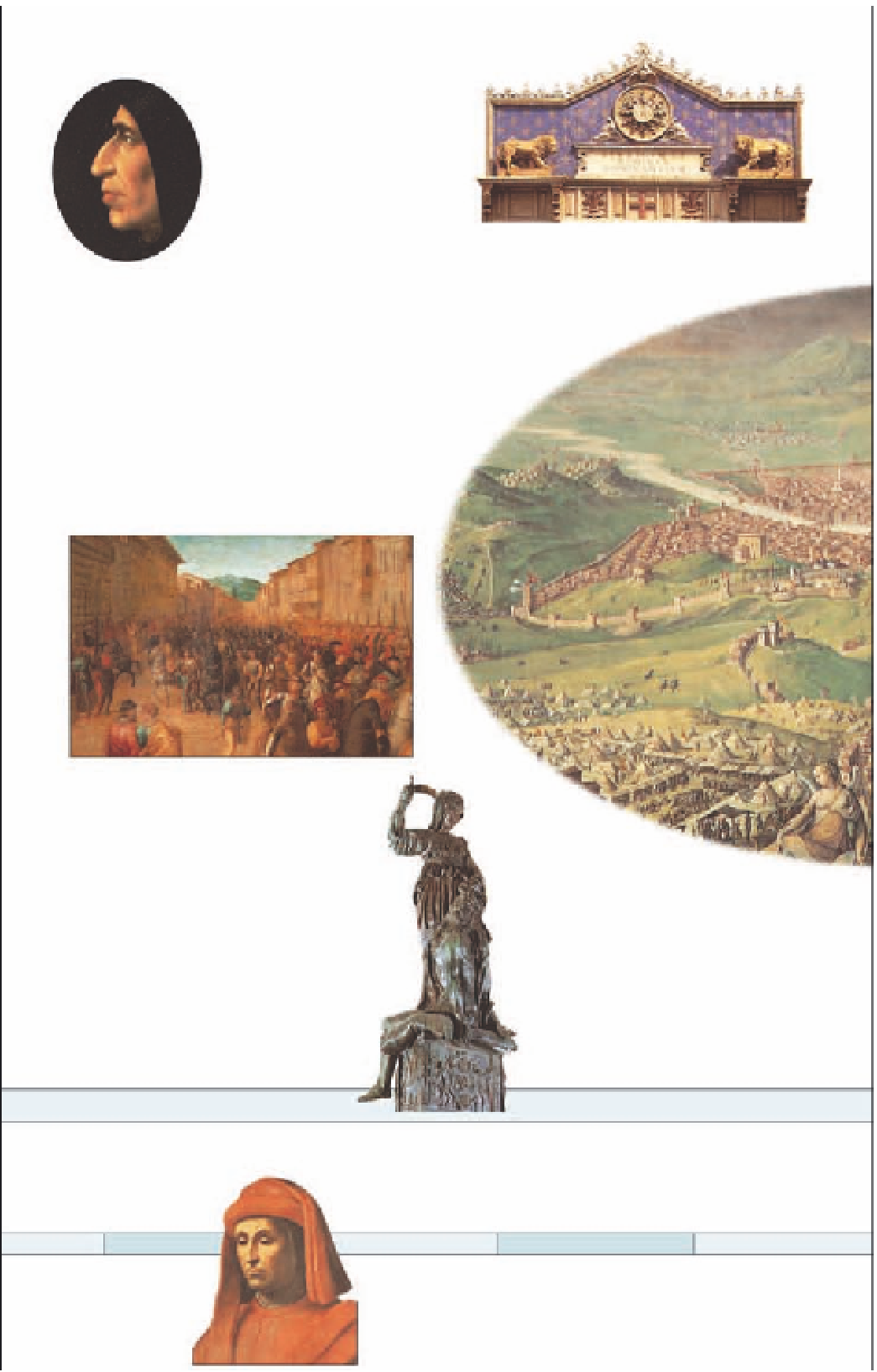Travel Reference
In-Depth Information
The Florentine Republic
In 1494, when Piero de'
Medici abandoned Florence
to the invading troops of
Charles VIII of France, the
city was declared a
Republic. Under the
leadership of the religious
fundamentalist, Girolamo
Savonarola, the people were
encouraged to believe that
God was their only ruler.
After his execution in 1498, the Republic
survived 32 years of constant attack.
Finally, in 1530, the Medici Pope, Clement
VII, and the Holy Roman Emperor, Charles
V of Spain, combined
forces and returned the
city to Medici rule.
Palazzo Vecchio Frieze
The inscription, “Christ is King”, on this
Republican frieze implies that
no mortal ruler has
absolute power.
Savonarola
(1452-98)
Present-day
Boboli Gardens
Charles VIII Enters Siena
When the French invaded Tuscan
cities in 1494, Savonarola claimed
it was God's punishment for the
Tuscan obsession with profane topics
and art. He ordered such objects
burned in bonfires of “vanity”.
THE SIEGE
OF FLORENCE
(1529-30)
Besieged by 40,000 papal and
imperial troops, the citizens of
Florence held out for ten months
before starvation and disease led
to their surrender. Vasari's fresco
in the Palazzo Vecchio shows the
full extent of the city's defences
and the scale of the enemy assault.
Judith and Holofernes
Donatello's statue of the
virtuous Judith slaying the tyrant
Holofernes was placed in front of
the Palazzo Vecchio in 1494 to
symbolize the end of Medici rule.
TIMELINE
1512
Florence
besieged by Cardinal
Giovanni de' Medici
1498
Savonarola
burnt at the stake
1504
Michelangelo
completes
David
(see p77)
1495
1505
1510
1494
Charles VIII
attacks Florence.
Savonarola seizes
power from
Medici family
1502
Soderini elected first
chancellor of the Republic
1513
Giovanni
de' Medici
crowned Pope
Leo X
1509
Pope Julius II
begins driving the French
from Italian soil
Chancellor
Soderini










































